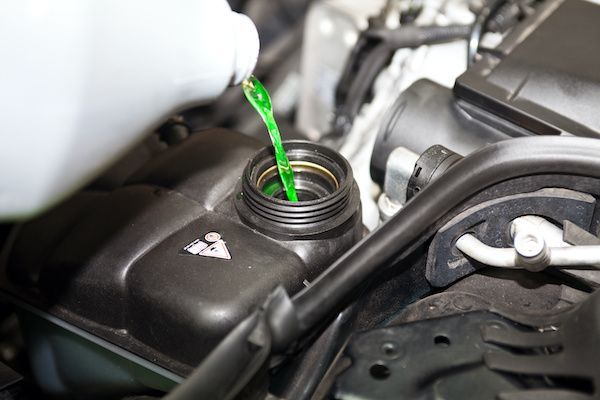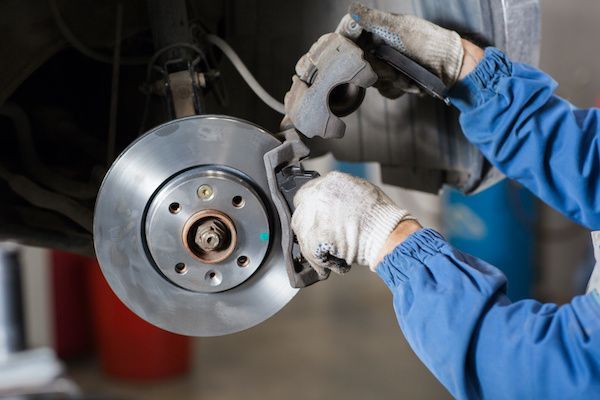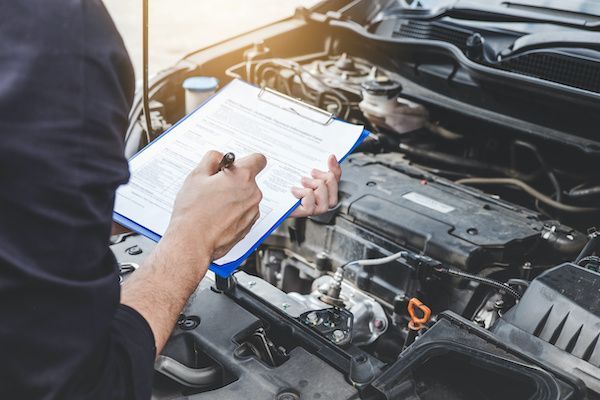Aliso Foreign Car is now Super Service of Aliso Viejo!
Blog
Our Blog
Book Appointment
26 Jan, 2024
Aliso Foreign Car’s Kent DeBord is happy to announce we are now Super Service of Aliso Viejo, owned by Bob Cornwall and Andrew Bray. If you have not yet stopped by the shop to meet Bob and Andrew, we invite you to do so. “We very much look forward to meeting everyone and sharing the super service we are known for,” says Bob Cornwall. Bob and Andrew also own Placentia Super Service in North Orange County. To give you some background on the new owners, let’s take a look at ten things they have accomplished at their other shop location: They think of all their clients as “guests” and treat them with warm hospitality. They are a well-respected auto repair business that is regularly featured in the Placentia Buzz. They service all Domestic, Asian, and European cars. Bob is the leader of the customer service side. He considers himself a “counselor for auto repair,” and he wants to provide the best possible auto repair shop experience. Andrew (aka AJ) is the ASE-Certified Master Technician who is the leader on the mechanical side. He is the car guy who believes that having the best team, state-of-the-art equipment, and factory-level tools are vital in providing top-notch auto repair and maintenance services. Together, Bob and Andrew are 50/50 partners in the business. They offer digital inspections, which means they take plenty of pictures of the car and text reports to the car owners for repair approval. This provides a level of transparency and communication that people prefer. They offer loaner cars and shuttle service so you can get back home or off to work. They plan to have soda and popcorn available in the waiting room. Over the years, they have earned an excellent reputation for super service, as you can see from their customer reviews . When your vehicle needs preventive maintenance service or repairs, we hope you will make a point to say hello to Bob and Andrew. They plan to provide a seamless visit for each of our guests and continue the super service tradition in auto repair. Schedule an appointment and let us know if you need to reserve a loaner car. We look forward to seeing you soon!

26 Jan, 2024
With the holidays comes awkward weather outside of our fair city. Aliso Viejo is mild and dry, but if you head out east or north to visit loved ones for the holidays, you may encounter what Canadians categorize as ‘rough sledding’. One of the biggest causes of roadside accidents isn’t rudeness and taking advantage of others, it’s not having awareness of what you’re doing. It’s very easy to think of your car as an extension of yourself and believe it will shelter you from harm perfectly. But that’s an arrogant way to drive and it can put you, your car, and your passengers in danger. It’s important not to treat a winter drive out of Aliso Viejo’s climate as typical. When you’re planning on taking a trip, no matter how short or how far the distance is, you should always treat the trip as a risk you are taking. Here are some tips we recommend for people hitting the roads for the holidays: Announce yourself. Everyone likes surprises like family and friends turning up unexpectedly. No one likes finding out that a friend spent 12 hours in the freezing cold when their car broke down off the interstate and they couldn’t get a signal to call. Make sure someone responsible knows that you are making the trip before you leave, and update them on the way with your estimated time of arrival. Do the math. You should work out how many miles you plan to drive and how much gas your car will consume. It’s good planning to consider what pit stops you need to make (food, gas, bathroom) and work them into your travel time. And it keeps the kids from asking “are we there yet” when they know the route, too, and know approximately what time their next stop will be. If you’re bringing pets, remember that traveling has extra stresses for them; don’t forget to plan for their breaks as you do your own. Map the route. Always know where you are going and what weather you may encounter on the way. The internet has a number of good resources for this. Don’t count on phone apps or services that may be hindered in bad weather; make a printed copy of your route. And know your pit stops well-- how to get in, and how to get back safely to the highway. Have an emergency kit. This can just be as simple as the things you’ll most need to get your car roadworthy again, like jumper cables, a tire inflator, a flashlight, and a first aid kit. If you have provisions and snacks for your trip, that can help make a long stay waiting for help to arrive into something manageable. We hope you’ll take this advice in the friendly spirit of trying to keep you and yours safe over the holidays! If you’re concerned or need advice, come schedule an appointment and speak to Bob or Andrew about it, we’re glad to offer some travel advice. We look forward to seeing you soon!

26 Jan, 2024
A car has necessary peripheral devices that enhance the functionality of the internal combustion engine. The devices, which include a power steering pump, air conditioning compressor, and water pump, cannot function optimally without the serpentine belt's help. The serpentine is the central engine belt that resembles a snake and is characterized by distinct ridges on one side of the belt. When the engine is turned on, the serpentine belt continues running until the car is shut off. Many experts recommend a serpentine change after 50,000 miles or after five years. Some last for 80,000 miles, but it is always recommended to always consult the car manual for the exact intervals. Heat and friction subjected to the serpentine subject it to failure, and there is a need for a replacement to guarantee a smooth and safe drive. Different warning signs can indicate a failing serpentine. It is essential to make appropriate serpentine replacements on time to prevent road mishaps like getting stranded. Watch out for these warning signs. Power Steering Failure A sudden failure in your car's power steering might indicate a failing serpentine. The belt might fail at pulling the pulley at flipped, and thus the pump fails to generate adequate pressure for the steering to work well. If the power steering fluid in the reservoir is full and no signs of leaks, the issue might be with the slipping belt Failed Air Conditioning If the air conditioning fails to produce cold air, it might indicate a failing belt. This might be a cause of the belt failing to turn the compressor at full speed. Squealing Noises When the engine is running, a failing serpentine may produce squealing noises due to misaligned pulley or belt spilling. It might start as a faint sound, which gets worse, indicating severity and need for replacement. Overheated Engine The water pump that cools the engine is activated by the serpentine. The damaged water pump fails to activate the water, and this makes the engine overhear. For any serpentine changes and diagnosis, drive at our auto repair shop and let our ASE certified experts complete the repairs.

26 Jan, 2024
Welcome to the New Year! If you’re going out to play in the snow up in the mountains, or going skiing in Colorado, you might want to consider a few helpful steps before you head out on your adventures. These are our top 5 ways to prepare your car for winter activities: Give the Tires a lot of love. Get a tire inflator that works from the road and fill your tires to the correct pressure before you start out. Check your tire tread and the rotation of the tires. Consider snow tires or all-weather tires if you’re going deep into snow somewhere. Top up your fluids. This is a really obvious thing, but if you’ve not looked into the maintenance of your car in a few months, do it before you head into snow. Change your oil and antifreeze. Make sure the winter windshield wiper fluid is in your tank, to prevent it freezing. Prepare an emergency kit. You want things to help you get out of snow if you slide into a snow bank, like a small shovel and a piece of old carpet slightly wider than your car is (to lay under your tires for traction). But an updated first-aid kit and emergency provisions would not be a bad addition, either. Inspect your battery. Check the charge and look for signs of corrosion. Fix your heater. Make sure your heater is in the proper working order, because it’s terrible to be in the snow when the car isn’t warming for you. With the exception of the emergency kit and a tire inflator, we can help you sort out most of these needs. Stay safe if you travel into cold weather conditions! If you need more cold-weather advice, come schedule an appointment and speak to Bob or Andrew about it, we’re glad to offer some travel advice. We look forward to seeing you soon!

26 Jan, 2024
Welcome to another February in Aliso Viejo! February is an active month with plenty of activities for everyone. In one week, we'll watch the Super Bowl, and in two weeks, we'll celebrate Valentine's Day on the weekend! Gift-giving Car owners tend to buy themselves their favorite things, so it might be hard to shop for one. But if you're determined to get your car lover a gift for Valentine's Day, here are some of our favorite gifts for car enthusiasts! Because their coffee table demands it, give them the book that they will love pouring over many times. Give them Car: The Definitive Visual History of the Automobile . Because they might someday get stuck somewhere and need to see in the dark, we recommend they give them the GoalZero Torch 500 Multi-Purpose Light . The solar-powered battery can recharge your phone while it shines a spotlight or hazard lights. When they need to see their phone but legally must keep their hands free, the iOttie One Touch Dash 4 is an excellent system for securing a smartphone to the dash. When you just know they'd instead be washing their car then grooming themselves, this kit of car washing product is the perfect thing. When it isn't enough to have an inflator and need the kind of inflator they use in pit crews, the autowit Cordless tire inflator can give them that pit crew sensation! Super Service of Aliso Viejo has tried to come up with a few cool gift items that are obscure enough that your sweetheart won't know about them, but it's always an acceptable policy to snoop before you purchase! We hope your Valentine's Day is loving and affectionate this year. Happy Valentine's Day!

26 Jan, 2024
The transmission is one of the most important parts of your car, and with proper maintenance and care, it will last longer than you think! The lifespan in mileage depends on the quality of your preventative maintenance and the vehicle model. It's important to ensure all scheduled tune-ups and regular service are provided to give your transmission the longest life you can! Preventative Maintenance Equals Longer Mileage and Better Performance Your transmission can last as little as 10,000 miles without proper care and service, or up to 200,000 by ensuring your vehicle is regularly serviced and checked for damage. If you suspect your car isn't running properly, it's best to check in with your local mechanic to be certain, even after a tune-up. Proactive Maintenance Means Fewer Expenses for Your Vehicle and Transmission Considering how important the transmission is to your car's lifetime, changing transmission fluid should be done carefully, especially if mileage is high. A mechanic can safely make the change and avoid a potential failure, which would result in a full replacement immediately. The expected life of your transmission can range anywhere from 100,000 to 200,000 miles if cared for properly. What Can I Do to Extend the Life of the Transmission? Regular service of the transmission, while it is important, should be done according to your vehicle's warranty and insurance guidelines. Bringing a copy of the coverage and specifications on repairs or service can be helpful too. Checking the fluid should be done often, according to the manufacturer's directions, to prevent unnecessary failures or issues that can impact your vehicle's performance. Understanding your vehicle's transmission's specifics is vital, as every model is different, with some requiring more regular service than others. Keeping the overall mileage low will successfully extend the life of your transmission and ensure it doesn't fail easily or too soon. Considering the normal lifespan range, your aim should be to keep your transmission running as long as possible, or as close to 200,000 miles as you can! If you need transmission repair, we invite you to bring your vehicle to our auto repair shop today!

26 Jan, 2024
Coolant, also called antifreeze, does exactly that -- it cools, and prevents freezing! Your car's cooling system needs coolant to regulate the temperature of your engine and prevent overheating. On the other end of the spectrum, it prevents your engine from freezing in the event of very cold temperatures. How is it possible? Although it may seem like magic, there's a perfectly reasonable -- and scientific -- explanation for why one colorful liquid can do two seemingly opposite jobs. The main active ingredient that is used in most coolant/antifreeze is a chemical called ethylene glycol, which is mixed with water before putting it in your car. As you may know, water has a boiling point of 100 degrees Celsius (212 Fahrenheit) and a freezing point of 0 degrees Celsius (32 degrees Fahrenheit). When you combine equal parts water and ethylene glycol, the boiling point is raised to 106 degrees Celsius (220 degrees Fahrenheit) and the freezing point is lowered to -37 degrees Celsius (-35 degrees Fahrenheit). The difference can be more dramatic with a mixture that has more ethylene glycol than water. This is how coolant/antifreeze prevents both, overheating and freezing. How does it work? For coolant/antifreeze to do its job, you pour the diluted liquid into the radiator, which is located in front of the engine. The water pump pumps the liquid through channels in the engine block, where it absorbs heat from the engine. The hot liquid is then pumped back toward the radiator through thin rubber tubes, cooling along the way. Then the cooled liquid is pumped through the engine block again and the cycle repeats. It's the water pump's job to keep the coolant/antifreeze constantly circulating so that it can continue to cool the engine effectively. Does it need to be changed? The short answer: yes. There are elements of coolant/antifreeze that prevent the metal it comes into contact with from rusting and wearing away. Over some time, these elements break down and this puts your car at risk of corroding. If you need a cooling system repair, give our auto repair shop a call today!

26 Jan, 2024
It’s March, which means it’s the first point in the new year that people start planning road trips. With COVID-19 vaccinations underway, we may see heavy road congestions this year during Spring Break. What about your family? Do you have plans for a week-long getaway? If you’re planning on taking a trip this Spring Break, it’s essential to know the five ways to get the family vehicle ready for a Spring Break excursion: Check your brakes . Brakes are number one for a reason. Spring weather can mean slick roads and ice. Check how often your car’s manufacturer says to replace the pads, and if there’s any indication that you need to replace them already (squealing, shaking, or the car pulling left or right), schedule maintenance with your mechanic. Check out the suspension . Your suspension is essential, not just to your family’s comfort, but to stay on the road. Heed the signs of a suspension breakdown. Check the cooling system . Your radiator, belts, and hoses are the second most prevalent cause of vehicle breakdowns. Don’t strand yourself or your family. It would be best if you had them looked over for breaks and leaks. Check your tires . Be sure to look for tread wear and air pressure. Check to see how long it’s been since they were balanced. Top up all the fluids . If an oil filter, lube, and oil change is coming due, go ahead and include it in pre-trip maintenance. When a mechanic tops up your fluids, they also tend to find other lurking issues, so it’s doubly wise to get this done. There’s no reason to worry about these things unless you charge ahead with a road trip without considering these things. Just bring your car to the qualified mechanics at Super Service and let us put your worries to rest, and make sure your trip will be safe in the planning. Schedule an appointment and let us know if you need to reserve a loaner car. We look forward to seeing you soon!

26 Jan, 2024
Brake rotors are an important part of your vehicle; they spin with and stop the wheels when the brake pads fasten down on them. There is a lot of heat that the brake rotors withstand in the process of braking; the need to dissolve the heat in a quick manner is there so the brake pads can be pressed down again. The surface of the brake rotors can become uneven over time all due to the mass amount of heat… this is also known as warping. When your brake rotors warp it can cause the brakes on your vehicle to become jittery and they will be less effective. When you think of brake warping you should know it means there is an uneven surface that is caused by heat. There are several ways in which your brake rotors can be warped; they include: Your brake rotors can become glazed with material that comes from your brake pads. This can happen when the brake pads get extremely hot which can cause the pad material to rub off onto the brake rotors. This will cause the surface of your brake rotor to become uneven and lower the efficiency of your brakes. The surface of your rotor can wear down and metal areas can be raised higher. This will happen with excessive heat, which can happen if you always apply pressure to your brakes. Heat will cause the metal to soften and that can lead to the meal wearing down in certain areas which will make the surface uneven. You can prevent your brake rotors from warping… a good way to do this is by being mindful of your braking habits. Whenever you constantly pressing on the brakes or holding them down for an extended period, you can cause more heat than needed and that can warp the surface of your brake rotors. This may be happening if you smell burning rubber, hear excessive squeaking when you brake, or your vehicle vibrates when you're approaching a stop. If you need brake repair, we invite you to bring your vehicle into our auto repair shop today!

26 Jan, 2024
Welcome back, spring-- a time for new beginnings and new adventures. Is your car in good enough condition to travel? The roads are clear, the weather is nice, and hopefully, your car is running smoothly. Here are five reasons why springtime is the perfect time to get maintenance for your vehicle: Spring is the time for renewal. The winter weather is very hard on a car, especially your starter and alternator. It takes your car’s battery extra effort to get your vehicle going. Now that its spring, and hearts are lighter, you should give your car some renewing energy. Test your battery, starter, and alternator. Get your fluids topped off (such as engine oil, brake fluid, power steering fluid, coolant, automatic transmission fluid, etc.). This kind of attention to your car’s needs will help identify any underlying issues. Roads are clear from the snow and storms. With the worst weather gone after wintertime, you’re free again to enjoy the open road in moderate spring. But that means those roads will soon be busier. It’s best to get an early assessment of any needs your car has before the crowds begin and you are too busy to devote the time. Springtime means it’s time for you to start driving more. Driving a safe car is very important. An inspection can establish that your vehicle is safe and driveable. Preventative maintenance is the key to a safe, reliable vehicle. A moderate temperature makes it easier to service your car. Spring is the best time to bring your vehicle in for maintenance. All of the bad weather on your car in the wintertime could have caused damage to your vehicle. Spring weather is an excellent time for a mechanic to identify any significant or minor problems with your car, as cold temperatures tend to make your fluids run thick and hot weather tends to make your engine run hot. You can go on vacation in your car in the best condition. Going on vacation can be a great life experience, but to protect that trip, it is essential to make sure that your tires are rotated or replaced. You do not want to risk a sudden blowout or bulges in your tires. When you have your tires checked and rotated, it would be wise to have your alignment and shocks checked to make sure your passengers will have a comfortable ride in your car. It’s springtime, and it’s time for your car renewed and refreshed for the road. Bring your vehicle to the auto mechanics at Super Service of Aliso Viejo, and let us put your mind at ease with an inspection. We have the best-qualified mechanics to make sure you are safe and ready to drive. Schedule an appointment today! We look forward to seeing you soon!

26 Jan, 2024
"Should I get a tune-up?" is a common question among car owners. Yes, there is a process for maintaining your car. Whether your car needs a tune-up depends on many factors. These factors include the age and condition of your car, how well you drive it, and what you do to maintain your car. There are many reasons why someone may want to have their car tune-up. Many times people find themselves having trouble driving their cars or they notice that things seem to be working slower than normal. This can happen if you take your car to a mechanic and they determine that the problem is with your brakes, your engine, or something else. When you have an expensive piece of machinery such as an engine or a transmission, you should always get it inspected by someone who is licensed and qualified to work on them. One final question that you should ask yourself when thinking about whether or not you need a tune-up is if you currently have a warranty on your car. Most car dealerships offer a limited-time warranty on most new cars. If your car came from a dealership, then chances are that the dealership will cover tune-ups and other maintenance services. If you purchased your car from a private party, then chances are that you will have to pay for the tune-up yourself. In most cases, people who own older vehicles have nowhere else to turn when it comes to getting maintenance done on their car. When looking at the cost of tune-ups, it can be well worth it to spend the money if you can get it covered by your warranty. If it's not covered via warranty, many repair shops offer excellent services for fair prices. You must remember that prevention is better than cure. This is the same for various problems that afflict your car like the symptoms of car problems. You must not ignore any warning signs or symptoms because they might lead to expensive consequences. It is better to take immediate action before the problem gets worse. If you need a tune-up performed, we invite you to bring your vehicle into our auto repair shop today!

26 Jan, 2024
Welcome to the Super Service of Aliso Viejo blog! With spring in full bloom, we know that some couples will be looking for something romantic to do for a weekend or just a day. California has all the romance you need, but we realize not everyone is familiar with all the joys of Southern California. Here are our top 4 Romantic Road Trips in Southern California: Mendocino County - rustic and peaceful, Mendocino County is a great coastal getaway for people needing fresh air and a sense of calm. Mendocino hosts some wonderful bed-and-breakfast inns. If you need things a little less sleepy, there’s always nearby Fort Bragg. Griffith Observatory - Some incredible films have been shot here, including Rebel Without A Cause and The Rocketeer. Give your partner the moon and stars! The Griffith is open Tuesday through Friday from noon to 10 p.m., and on the weekend from 10 a.m. to 10 p.m. Sonoma County - Come to see the rolling hills of wine country! There are hot-air-balloon rides, world-class cuisine, and hiking trails to enjoy. Big Sur - Big Sur has both awe-inspiring views of the coastline and lush redwood forests, and breathtakingly beautiful local fauna. This famous coast offers luxury hotels, gourmet restaurants, and fancy spa resorts, in addition to rustic-chic inns and campsites. We hope you and your special somebody will enjoy some of what Southern California has to offer. If you’re planning on a bit of a trip, don’t forget to bring your car to the qualified mechanics at Super Service to check your car out first. Schedule an appointment and let us know if you need to reserve a loaner car. We look forward to seeing you soon!




